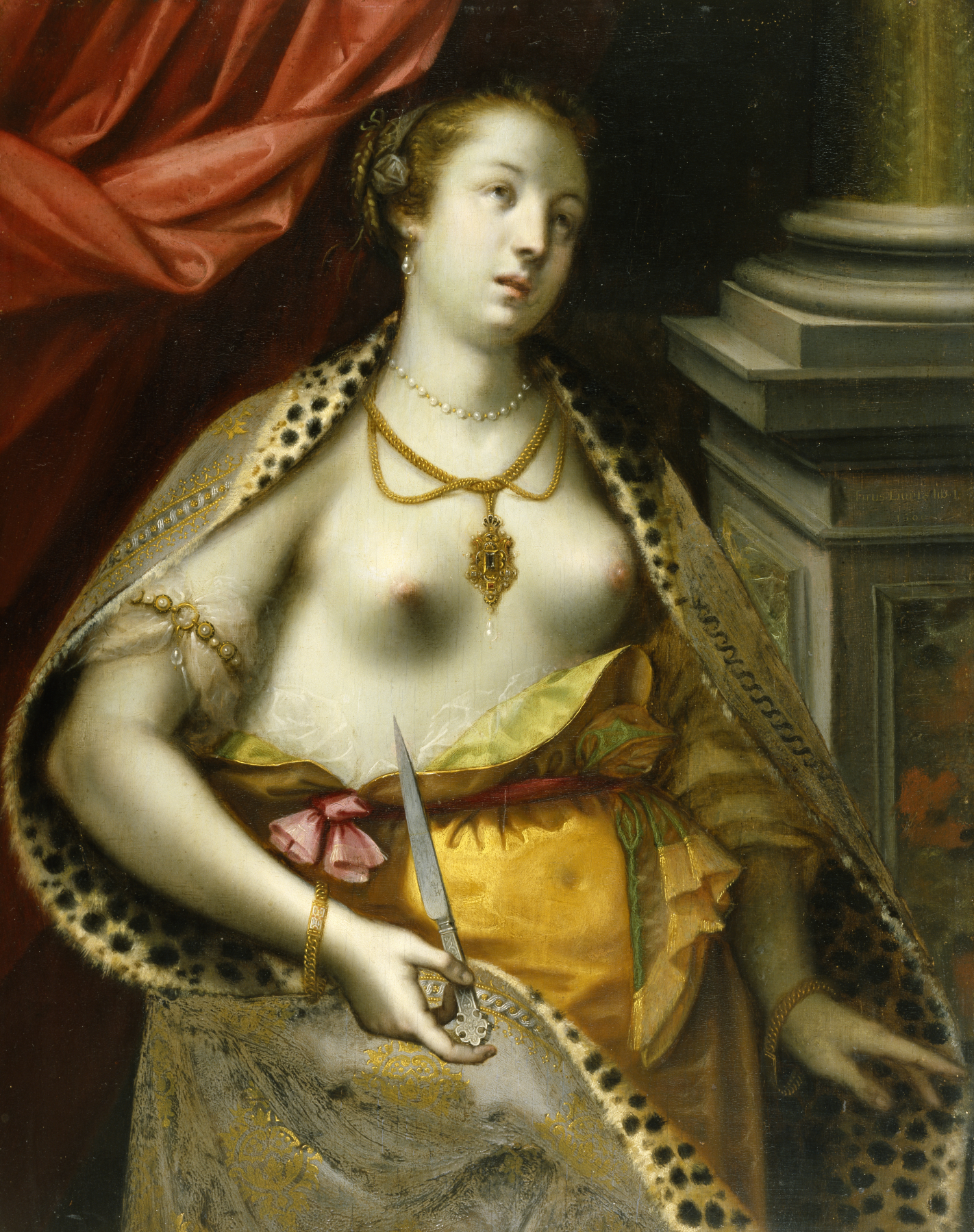The Suicide of Lucretia
(Renaissance Europe )
The suicide of the Roman heroine Lucretia was related by the historian Livy (59 BCE- 17 CE). Raped by an Etruscan prince, she extracted an oath of vengeance from her father and husband and then stabbed herself. As a result, the Etruscan kings were expelled and the Roman Republic was established (late 6th century BCE). At the time (and still so around 1600), her response to being raped--suicide--was considered appropriate, even noble.
By the 1500s, Lucretia was depicted as a beautifu, sexually desirable woman whose rich garments are pulled open and who plunges a dagger into her breast. So even at the moment of death she is depicted to appeal to the lust of the male viewer. The dagger is inscribed with the mark of the Nuremberg artist, Heinrich Ulrich, who is known primarily as an engraver. The colors, mannerist figure type, and erotic overtones suggest the influence of German painters such as Hans von Aachen at the Habsburg court in Prague around 1600 but Ulrich, if he is the painter, could have encountered their paintings elsewhere. Initials previously described as reading CSB (?) intertwined with the reference to Livy on the bottom of the column (and visible in old photographs) now appear to have existed only in a later glaze. With that glaze removed, there is no longer evidence for them; thus the puzzle of the unidentified "Master CSB" can be put to rest.
Inscription
Provenance
Provenance (from the French provenir, 'to come from/forth') is the chronology of the ownership, custody, or location of a historical object.
Don Marcello Massarenti Collection, Rome; purchased by Henry Walters, Baltimore, 1902; by bequest to Walters Art Museum, 1931.
Exhibitions
| 1971-1972 | World of Wonder. The Walters Art Gallery, Baltimore. |
Conservation
| Date | Description | Narrative |
|---|---|---|
| 5/10/1948 | Treatment | cleaned; repaired; loss compensation; coated |
| 5/10/1948 | Treatment | coated; filled; inpainted; reconstructed; varnish removed or reduced |
| 5/13/1952 | Treatment | cleaned |
Geographies
Germany, Nuremberg (Place of Origin)
Measurements
H: 26 x W: 21 in. (66 x 53.3 cm)
Credit Line
Acquired by Henry Walters with the Massarenti Collection, 1902
Location in Museum
Accession Number
In libraries, galleries, museums, and archives, an accession number is a unique identifier assigned to each object in the collection.
In libraries, galleries, museums, and archives, an accession number is a unique identifier assigned to each object in the collection.
37.339


